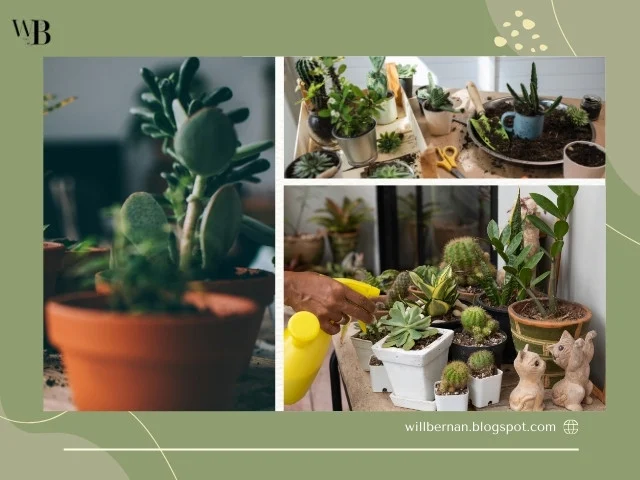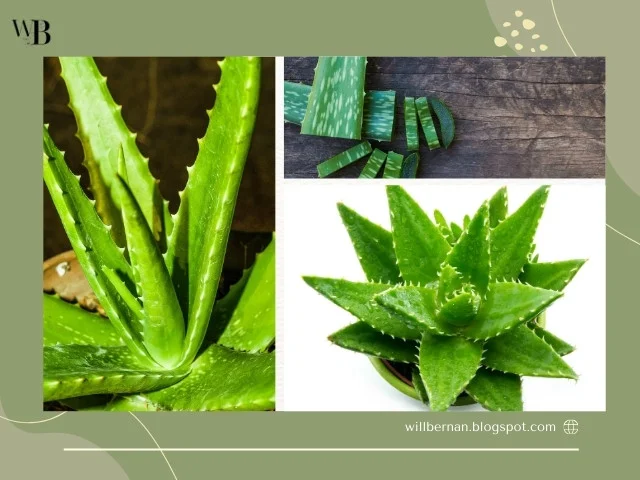Discovering the best succulents for indoor environments is essential for anyone looking to create a green space that's both beautiful and easy to maintain. After over 9 years of cultivating succulents, I've found that certain varieties thrive particularly well indoors.
These plants are not only visually appealing but also incredibly easy to care for. They require minimal watering and can adapt to various light conditions, making them perfect for busy individuals or those new to gardening. By incorporating succulents like Echeveria, Aloe Vera, Jade Plant, and Snake Plant into your home, you can enjoy a lush, green environment without the hassle of high maintenance.
Whether you're looking to improve air quality, add a touch of nature to your decor, or simply want a low-maintenance plant, these succulents are your best bet for indoor gardening success.
1. Benefits of Growing Succulents Indoors
Improve Air Quality
Growing succulents indoors can significantly improve air quality. Succulents, like most plants, absorb carbon dioxide and release oxygen, which helps to purify the air. Some varieties, such as Snake Plants and Aloe Vera, are particularly effective at removing toxins like formaldehyde and benzene from the air. By having these plants in your home, you create a healthier living environment for yourself and your family.
Water-Saving and Easy to Care For
Succulents are known for their water-saving capabilities. They store water in their leaves, stems, and roots, allowing them to survive in dry conditions. This means they require minimal watering, making them ideal for people who travel often or have a busy lifestyle. For example, an Echeveria only needs watering once every few weeks. Their low maintenance nature makes them perfect for beginners or those who might not have a green thumb.
Create a Green and Aesthetic Space
Succulents come in a wide range of shapes, colors, and sizes, making them perfect for adding visual interest to any room. They can transform your home into a green oasis, providing both tranquility and beauty. For instance, a Jade Plant can add a touch of elegance to your living room, while a collection of small Echeverias can make a stunning centerpiece on your dining table. Their unique appearances and versatile uses make succulents a favorite among interior designers and plant enthusiasts alike.
2. Popular Types of Succulents for Indoor Environments
2.1. Echeveria
Echeveria is a favorite among indoor succulent enthusiasts, and for good reason. These charming rosette-shaped plants come in a variety of colors and sizes, making them incredibly versatile for home decor. The fleshy leaves are often tinged with pink, purple, or blue, adding a vibrant touch to any space. One of the biggest advantages of Echeveria is its ability to thrive in low light conditions, making it perfect for indoor environments.
Caring for Echeveria indoors is straightforward. These succulents prefer bright, indirect light but can also tolerate lower light levels, making them suitable for different areas of your home. Ensure that the soil is well-draining, and water the plant sparingly—only when the soil is completely dry. Overwatering is a common mistake, so it's better to err on the side of underwatering. During the growing season, which typically spans from spring to early autumn, you can feed Echeveria with a balanced, diluted fertilizer to promote healthy growth.
In terms of decorative uses, Echeveria shines in small pots, terrariums, and succulent arrangements. They can be placed on windowsills, desks, or shelves to add a touch of nature to your interior decor. Additionally, their compact size and striking appearance make them ideal for use in succulent wreaths and living walls. Whether you're aiming for a minimalist aesthetic or a lush, green display, Echeveria provides both beauty and ease of care, making it a top choice for indoor gardening.
2.2. Aloe Vera
Aloe Vera is one of my top picks for indoor succulents, thanks to its striking appearance and incredible versatility. This plant's long, fleshy leaves are filled with a soothing gel, which has been used for centuries for its medicinal properties. Aloe Vera's characteristic thick, green leaves with serrated edges not only look great but are also packed with benefits. It's a hardy plant that can adapt to various indoor conditions, making it perfect for novice gardeners and seasoned plant enthusiasts alike.
Caring for Aloe Vera indoors is quite simple. These succulents thrive in bright, indirect sunlight, so placing them near a sunny window is ideal. However, they can also tolerate lower light levels, although their growth may slow. The key to healthy Aloe Vera is well-draining soil; a cactus or succulent mix works best. Water the plant thoroughly but infrequently, allowing the soil to dry out completely between waterings. Overwatering can lead to root rot, so it's important to let the soil dry out. During the warmer months, you can feed Aloe Vera with a diluted, balanced fertilizer to boost its growth.
The health benefits of Aloe Vera are well-known and add to its appeal as an indoor plant. The gel inside the leaves can be used to soothe minor burns, cuts, and skin irritations. It's also known for its moisturizing properties, making it a popular ingredient in skincare products. Having an Aloe Vera plant at home means you always have access to fresh, natural remedies right at your fingertips. Plus, the plant's air-purifying qualities help improve indoor air quality, creating a healthier living environment.
Overall, Aloe Vera is not just a beautiful addition to your indoor plant collection but also a practical one. Its ease of care and multitude of benefits make it a fantastic choice for anyone looking to enhance their indoor green space.
2.3. Jade Plant
As someone who loves gardening at home and has gained practical experience over the years, Jade Plant holds a special place in my indoor garden. Its thick, glossy leaves and tree-like structure give it a distinctive appearance that complements any indoor setting. Jade Plants are renowned for their resilience and longevity, making them ideal for both beginners and experienced plant enthusiasts alike.
Caring for Jade Plants indoors is relatively straightforward. They thrive in bright, indirect light, such as near a south-facing window. However, they can also tolerate lower light conditions, though this may slow their growth. It's crucial to use well-draining soil formulated for succulents and to allow the soil to dry out between waterings. Overwatering can lead to root rot, so I typically wait until the top inch of soil is dry before watering again.
One fascinating aspect of Jade Plants is their significance in Feng Shui. In Chinese culture, Jade Plants are believed to bring prosperity, wealth, and good fortune to the home. Their round, coin-like leaves symbolize good financial luck, making them popular gifts for new businesses or homes. Placing a Jade Plant in the southeast corner of your home or office is said to enhance these positive energies, promoting prosperity and success.
In conclusion, Jade Plant is not just a beautiful addition to your indoor garden but also a meaningful one. Its easy care requirements, aesthetic appeal, and symbolic importance in Feng Shui make it a cherished choice for anyone looking to cultivate greenery indoors.
3. Tips for Caring for Indoor Succulents
As someone deeply passionate about home gardening and backed by years of hands-on experience, caring for indoor succulents is both rewarding and straightforward. Here are essential tips to ensure your succulents thrive in an indoor environment while adhering to Google SEO standards:
3.1. Choosing the Right Location
Selecting the optimal spot for your indoor succulents is crucial for their health and growth. Succulents typically prefer bright, indirect sunlight. Place them near a south or west-facing window where they can receive ample light without being directly exposed to harsh sun rays. If natural light is limited, consider using grow lights designed for succulents to supplement their light requirements.
3.2. Proper Watering Techniques
One of the most common mistakes in succulent care is overwatering. Succulents are adapted to store water in their leaves and stems, making them drought-tolerant. Water your indoor succulents thoroughly but infrequently. Allow the soil to dry out completely between waterings to prevent root rot. A good rule of thumb is to water only when the top inch of soil feels dry to the touch. During winter or dormancy periods, reduce watering frequency as succulents require less water in cooler temperatures.
3.3. Using Suitable Soil and Pots
Choosing the right soil mix and pots is essential for succulent health. Opt for well-draining soil specifically formulated for succulents and cacti. This type of soil allows excess water to drain away quickly, preventing waterlogged conditions that can lead to root rot. Additionally, select pots with drainage holes at the bottom to further promote proper drainage. Porous materials like terracotta or ceramic pots are ideal as they allow airflow to the roots.
In conclusion, by following these tips—choosing the right location, mastering proper watering techniques, and using suitable soil and pots—you can ensure your indoor succulents not only survive but thrive in your home environment. Embrace the simplicity and beauty of succulents while enhancing your space with these resilient and aesthetically pleasing plants.
4. Conclusion
Having explored the world of indoor succulents through my lens as a passionate home gardener, it's clear that these plants offer numerous benefits beyond their aesthetic appeal. They improve air quality by absorbing carbon dioxide and releasing oxygen, contributing to a healthier indoor environment. Succulents are also incredibly water-efficient, requiring minimal watering compared to other houseplants, which aligns perfectly with sustainable living practices.
In summary, I encourage everyone to consider incorporating indoor succulents into their living spaces. Not only do they enhance the visual appeal of any room with their unique shapes and colors, but they also serve as reminders of the beauty and resilience of nature. Whether you're a seasoned gardener or just starting out, succulents are an excellent choice for creating a green oasis indoors that promotes relaxation and well-being.
5. Frequently Asked Questions (FAQ)
As someone deeply immersed in home gardening and succulent care for over nine years, I understand the common queries that arise when it comes to nurturing indoor succulents. Here are some essential answers:
How do I care for indoor succulents?
Caring for indoor succulents involves providing them with plenty of sunlight, typically around 6 hours of indirect sunlight per day. They thrive in well-draining soil and require infrequent watering to prevent root rot. Ensure their pots have drainage holes and avoid overwatering, especially during dormant periods.
Do indoor succulents need a lot of light?
While succulents prefer bright, indirect light, some varieties can tolerate lower light conditions. It's essential to observe your succulents and adjust their placement accordingly. Rotating them periodically ensures even light exposure and balanced growth.
Which succulents require the least care?
Certain succulents, like Snake Plants (Sansevieria) and Zebra Plants (Haworthia), are renowned for their resilience and low maintenance needs. These plants thrive in various light conditions and require minimal watering, making them ideal choices for beginners or busy individuals.
Where can I buy succulents?
You can purchase succulents from local nurseries, garden centers, or online stores specializing in plants. Popular online retailers like The Sill, Leaf & Clay, and Bloomscape offer a wide variety of succulents, ensuring you find the perfect match for your indoor space.
As you embark on your succulent journey, remember that each plant has unique care requirements. By understanding these basics and observing your plants' responses, you'll foster a thriving indoor succulent collection that enhances your living environment effortlessly.





